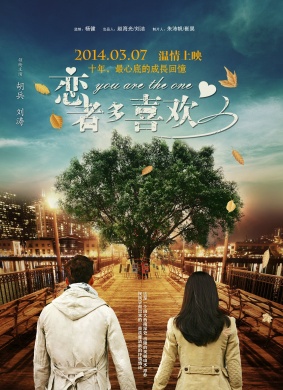恋者多喜欢的影评
▥电影
𝄐 0
导演:白承勋|
主演:胡兵|刘涛|马静怡|崔准硕|连晋|
年份:(2013)
"Love Letter" is a 1995 Japanese film directed by Shunji Iwai. The film tells the story of two women, Hiroko Watanabe and Itsuki Fujii, who are both in love with the same man, Takashi Miura. The film explores themes of grief, loss, and the power of written words to connect people. The film begins with the death of Hiroko's boyfriend, who she had been planning to marry. As she grieves, she comes across a letter that he had written to a woman named Itsuki Fujii. Curious, Hiroko decides to travel to Itsuki's hometown to find out more about her. Along the way, she discovers that Itsuki had also been in love with her boyfriend, Takashi Miura. As the story unfolds, we see the parallel lives of these two women, both struggling to come to terms with their feelings of loss and longing. Their stories are interconnected through the letters they write to each other, which provide a source of comfort and understanding. The film is beautifully shot, with stunning cinematography capturing the natural beauty of Japan. The performances by the cast are excellent, particularly from Miho Nakayama, who plays both Hiroko and Itsuki. The music, composed by Takeshi Kobayashi, is haunting and melancholic, adding to the film's overall sense of sadness and nostalgia. One of the strengths of "Love Letter" is its exploration of the power of written words to connect people. Throughout the film, we see characters expressing their emotions and thoughts through letters, whether it be Hiroko's letters to Itsuki or Takashi's letters to Hiroko. This theme is particularly relevant in today's digital age, where we are increasingly reliant on instant messaging and social media to communicate with each other. Overall, "Love Letter" is a beautifully crafted film that explores themes of grief, loss, and the power of written words to connect people. Its poignant story and stunning visuals make it a must-watch for fans of Japanese cinema.

电影类型:2014-03-07(内地) | 喜剧 爱情 剧情 | 中国 |1小时30分钟
主演:胡兵|刘涛|马静怡|崔准硕|连晋|
年份:(2013)
"Love Letter" is a 1995 Japanese film directed by Shunji Iwai. The film tells the story of two women, Hiroko Watanabe and Itsuki Fujii, who are both in love with the same man, Takashi Miura. The film explores themes of grief, loss, and the power of written words to connect people. The film begins with the death of Hiroko's boyfriend, who she had been planning to marry. As she grieves, she comes across a letter that he had written to a woman named Itsuki Fujii. Curious, Hiroko decides to travel to Itsuki's hometown to find out more about her. Along the way, she discovers that Itsuki had also been in love with her boyfriend, Takashi Miura. As the story unfolds, we see the parallel lives of these two women, both struggling to come to terms with their feelings of loss and longing. Their stories are interconnected through the letters they write to each other, which provide a source of comfort and understanding. The film is beautifully shot, with stunning cinematography capturing the natural beauty of Japan. The performances by the cast are excellent, particularly from Miho Nakayama, who plays both Hiroko and Itsuki. The music, composed by Takeshi Kobayashi, is haunting and melancholic, adding to the film's overall sense of sadness and nostalgia. One of the strengths of "Love Letter" is its exploration of the power of written words to connect people. Throughout the film, we see characters expressing their emotions and thoughts through letters, whether it be Hiroko's letters to Itsuki or Takashi's letters to Hiroko. This theme is particularly relevant in today's digital age, where we are increasingly reliant on instant messaging and social media to communicate with each other. Overall, "Love Letter" is a beautifully crafted film that explores themes of grief, loss, and the power of written words to connect people. Its poignant story and stunning visuals make it a must-watch for fans of Japanese cinema.

电影类型:2014-03-07(内地) | 喜剧 爱情 剧情 | 中国 |1小时30分钟
本文地址:
/show-yp_186048.html
版权声明:除非特别标注原创,其它均来自互联网,转载时请以链接形式注明文章出处。


